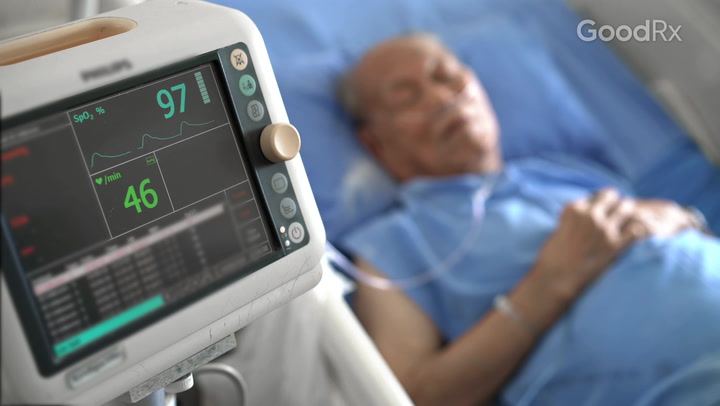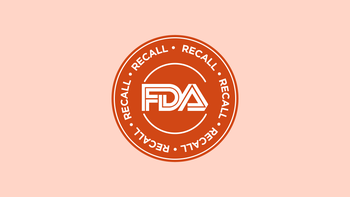
Valsartan Dosages: Your GoodRx Guide
Key takeaways:
Valsartan (Diovan) is an angiotensin II receptor blocker (ARB). It’s prescribed to treat high blood pressure and heart failure. It can also be used after a heart attack to prevent further heart problems.
The usual adult starting dose of valsartan varies by what it’s being used for. It ranges from 40 mg to 160 mg per day. In children, the dose is weight based. Your healthcare provider may increase your dose based on how you respond to the medication.
Valsartan is available as a brand-name medication and lower-cost generic. You can find generic valsartan tablets for as low as $18.93 a month with a free GoodRx discount.
Table of contents

Valsartan (Diovan) is part of a group of medications called angiotensin II receptor blockers (ARBs). It treats high blood pressure (hypertension), heart failure, and more. It’s available as an oral tablet and oral liquid.
If you or a loved one has been prescribed valsartan, it’s important to follow the dosing instructions from your healthcare provider. Taking the right valsartan dosage can help you get the most out of your medication.
What’s the typical valsartan dosage for adults?
Here, we’ll cover usual recommendations for valsartan dosages for each condition it’s approved to treat. Keep in mind that what’s discussed might be different from the dosage your healthcare provider prescribed. It’s important to defer to your provider and talk with them if you have questions about your specific dosage instructions.
Hypertension
ARBs, like valsartan, are first-choice medications for treating hypertension. This is because research has established that ARBs are good at lowering blood pressure. This is important if you’re diagnosed with hypertension, which is a risk factor for cardiovascular disease (CVD). CVD can lead to major health issues like heart attack or stroke.
If you’re prescribed valsartan for hypertension, your healthcare provider may start you at a dose of 80 mg to 160 mg once daily. And they may increase your dose up to 320 mg per day depending on how you respond.
Valsartan may take up to a month to have its full blood pressure-lowering effect. But you should start to see its effects within 2 weeks. ARBs like valsartan are often combined with other first-choice blood pressure medications like thiazides (a type of diuretic) or calcium channel blockers.
Heart failure
ARBs have been shown to lower the risk of hospitalization or death in people with certain types of heart failure. This is why they’re a first-choice medication for heart failure when combined with other heart failure medications, like diuretics and beta blockers.
In heart failure, your healthcare provider may start valsartan at a dose as low as 20 mg daily. But usually the dose is increased much higher than this, up to 160 mg twice daily (for a total of 320 mg per day).
Keep in mind: A medication containing valsartan — called Entresto (sacubritil/valsartan) — has been shown to be more effective for heart failure than valsartan alone. For information on Entresto dosages, check out our GoodRx guide.
After a heart attack
The starting dose of valsartan after a heart attack may be a low dose of 20 mg twice daily. But the dose may be increased within 7 days to a dose of 40 mg twice daily.
If you’ve shown you can tolerate the medication — meaning your blood pressure does not drop too low and are free of serious side effects — your provider may raise your dosage further. Your dosage then will be increased incrementally until you hit the goal dosage of 160 mg twice daily.
Kidney problems caused by diabetes
ARBs are used off-label for kidney problems caused by diabetes (diabetic nephropathy). In fact, the Kidney Disease: Improving Global Outcomes (KDIGO) Diabetes Work Group recommends them as a first-choice option in people with hypertension and diabetic nephropathy. But even if you don’t have hypertension, an ARB may still be a good choice for diabetic nephropathy.
If you’re prescribed valsartan for this reason, the usual dosage ranges from 80 mg to 160 mg.
What’s the typical valsartan dosage for children?
Valsartan is approved to treat hypertension in kids 6 years and older.
The dose is weight-based. Your child’s healthcare provider may recommend a dose of 1 mg to 2 mg per kg of body weight (up to 40 mg) once daily. The dose may be increased based on how your child responds. The typical maximum dosage is 4 mg per kg of body weight (up to 160 mg) once daily.
Valsartan is available as a liquid solution if your child can’t swallow pills. They can also use the liquid solution if their prescribed dose can’t be made up using valsartan tablets. A liquid suspension can also be made at a compounding pharmacy.
Are there any dosage adjustments for medical conditions?
Not usually. But if you have severe kidney disease, you may be more likely to experience negative side effects from valsartan.
This includes worsening kidney problems or high potassium levels (hyperkalemia). So talk to your healthcare provider if you have existing kidney problems. They may want to monitor your kidney function more closely, or increase your valsartan dosage more slowly.
What happens if you miss a dose of valsartan?
It’s possible that you’ll forget to take valsartan at some point. If this happens, take your missed dose as soon as you remember.
But what if it’s almost time for your next dose? In this case, just skip the missed dose. Take your next dose at the regularly scheduled time.
Don’t take two valsartan doses at once to try to make up for a missed dose.
What should you do if you take too much valsartan?
If you take too much valsartan, you’re more likely to experience side effects. This includes dizziness, low blood pressure, and a fast heart rate. In severe cases, this could cause you to pass out and even go into shock.
If you or someone you know thinks they might have taken too much valsartan, call Poison Control at 1-800-222-1222. If your side effects are severe, seek emergency medical care or call 911.
How to save on valsartan
Valsartan is available as a lower-cost generic. GoodRx can help you save over 70% off the average retail price of generic valsartan at certain pharmacies. You may pay as low as $18.93 for generic valsartan using a free GoodRx discount.
The bottom line
Valsartan is a medication that treats hypertension and heart failure. It can also be used after a heart attack to prevent further heart problems. And it’s used off-label in people with diabetic nephropathy.
Valsartan is taken by mouth once or twice a day. You’ll usually start at a low dose, and your healthcare provider may increase it based on how you respond. If you miss a dose, take it as soon as you remember. But if it’s too close to your next scheduled dose, skip the missed dose.
Why trust our experts?



References
Alembic Pharmaceuticals Limited. (2023). Valsartan [package insert].
Heidenreich, P. A., et al. (2022). 2022 AHA/ACC/HFSA guideline for the management of heart failure: A report of the american college of cardiology/american heart association joint committee on clinical practice guidelines. Circulation.
Kidney Disease: Improving Global Outcomes (KDIGO) Diabetes Work Group. (2022). KDIGO 2022 clinical practice guideline for diabetes management in chronic kidney disease. Kidney International.
Kjeldsen, S. E., et al. (2019). Medical therapies for heart failure with preserved ejection fraction. Hypertension.
Saikawa, T., et al. (2010). Is the reno-protective effect of valsartan dose dependent? A comparative study of 80 and 160 mg day−1. Hypertension Research.
Smith, S. C., Jr., et al. (2011). AHA/ACCF secondary prevention and risk reduction therapy for patients with coronary and other atherosclerotic vascular disease: 2011 update: A guideline from the American Heart Association and American College of Cardiology Foundation. Circulation.
Viberti, G. et al. (2002). Microalbuminuria reduction with valsartan in patients with type 2 diabetes mellitus: A blood pressure-independent effect. Circulation.
Whelton, P. K., et al. (2017). 2017 ACC/AHA/AAPA/ABC/ACPM/AGS/APhA/ASH/ASPC/NMA/PCNA guideline for the prevention, detection, evaluation, and management of high blood pressure in adults: A report of the american college of cardiology/american heart association task force on clinical practice guidelines. Hypertension.
Was this page helpful?
Related Articles
Browse medications
View AllResearch prescriptions and over-the-counter medications from A to Z, compare drug prices, and start saving.



















